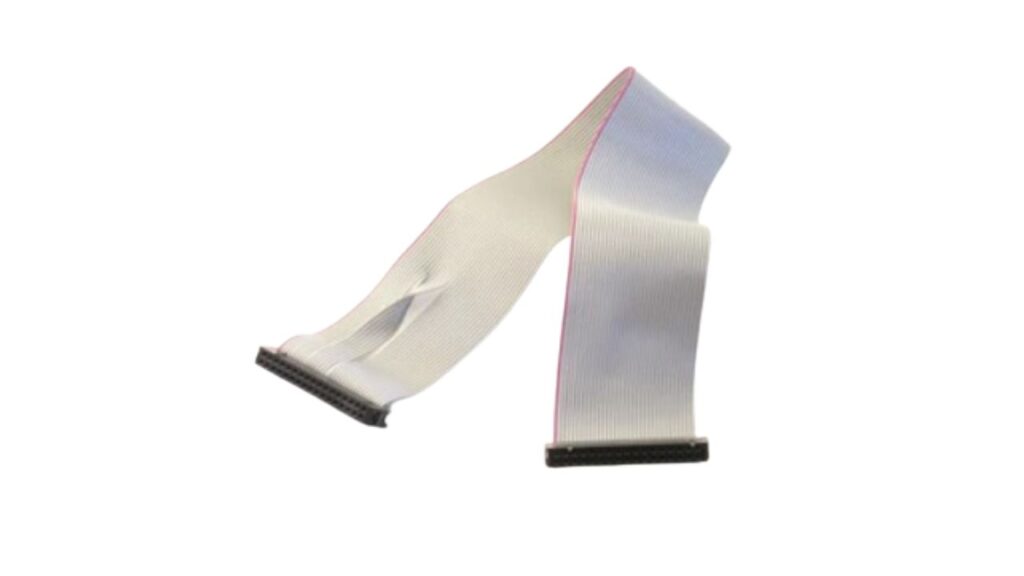In the realm of computing, especially when it comes to connecting various components of a computer system, understanding the essentials is paramount. One such fundamental component that has played a significant role in the history of computer hardware is the IDE Cable.
Integrated Drive Electronics (IDE) is a prevalent interface standard in computing. It enables the connection and communication between a computer’s motherboard and its storage devices. IDE is typically utilized for linking hard disk drives (HDDs) and optical disc drives (ODDs) to the computer system.
IDE has played an important role in the evolution of computer storage, offering a simple and efficient way to interact with multiple drives.
What is the purpose of IDE?
IDE, or Integrated Drive Electronics, serves as a standardized interface linking a computer’s motherboard with its storage components, including hard drives and optical drives. IDE facilitates seamless connectivity and communication with these devices, facilitating data transfer and storage functionalities.
How does IDE work?
IDE operates through a flat ribbon cable equipped with multiple connectors, linking the motherboard to storage devices. This cable facilitates data transfer between the drives and the computer system through parallel communication, allowing for simultaneous transmission of multiple bits of data.
Introduction to IDE Cable
IDE, short for Integrated Drive Electronics, is a crucial interface used for connecting storage devices, such as hard disk drives and optical drives, to a motherboard. It served as a primary method for data transfer within personal computers for several decades.
Understanding IDE Cable
What is IDE?
IDE is a standard interface for connecting storage devices within a computer system. It originated in the 1980s and revolutionized the way data was transferred and stored within computers.
Evolution of IDE Cable
Initially, IDE cables were bulky ribbon-like cables with connectors for multiple drives. However, advancements led to the development of smaller, more efficient cables, improving airflow and cable management within computer cases.
Advantages of IDE Cable
One of the primary advantages of IDE cables was their widespread compatibility with various devices and systems. Additionally, they provided a cost-effective solution for connecting multiple drives to a single motherboard.
Limitations to IDE Cable
Despite their advantages, IDE cables had several limitations, including slower data transfer rates compared to newer technologies like SATA. Additionally, their bulky nature could impede airflow and contribute to cable clutter within computer cases.
IDE Cable vs. SATA Cable
Key Differences
SATA (Serial ATA) cables emerged as a successor to IDE cables, heralding a new era of technological advancement. They offered significant improvements in terms of data transfer speeds, cable size, and hot-swapping capabilities. Unlike IDE cables, which utilized parallel connections, SATA cables utilized serial connections, leading to faster and more efficient data transfer rates.
IDE Cable to USB
With the advent of USB technology, IDE cables were adapted to connect IDE devices to USB ports. This allowed for the continued use of IDE devices with modern computers lacking IDE interfaces.
Compatibility and Usage
IDE to USB adapters enable users to connect IDE devices, such as older hard drives or optical drives, to computers or laptops via USB ports. This proved beneficial for retrieving data from legacy storage devices or repurposing IDE drives in modern systems.
Transition from IDE to SATA
As technology advanced, the computing industry witnessed a significant shift from IDE to SATA interfaces. This transition was driven by the superior performance and efficiency of SATA, marking a new era in computer hardware.
Reasons for Transition
The transition from IDE to SATA was driven by the need for faster data transfer speeds, improved cable management, and support for hot-swapping capabilities. SATA cables offered higher bandwidth and better compatibility with modern storage devices, making them the preferred choice for new computer systems.
Future Prospects of IDE Cable
While IDE cables have become obsolete in modern computer systems, they continue to hold a significant place in the history of computer hardware. They were the standard interface for connecting storage devices for several decades, marking a crucial era in the evolution of computer technology.
However, with the advent of newer technologies like SATA and NVMe interfaces, the future of IDE cables primarily lies in legacy systems and the hearts of retro computing enthusiasts.
FAQs
Are IDE cables still used in modern computers?
IDE cables have largely been replaced by SATA and NVMe interfaces in modern computers. However, they may still be found in older systems or specialized applications.
Can IDE devices be connected to USB ports?
Yes, IDE-to-USB adapters enable the connection of IDE devices to USB ports, allowing compatibility with modern systems.
What are the main advantages of SATA over IDE?
SATA cables offer higher data transfer speeds, better cable management, and support for hot-swapping capabilities compared to IDE cables.
Is it possible to upgrade from IDE to SATA?
Yes, users can upgrade from IDE to SATA by replacing their IDE drives with SATA drives and ensuring compatibility with the motherboard.
Are IDE cables still manufactured today?
While IDE cables may not be as widely manufactured as SATA or NVMe cables, they still serve a practical purpose in certain scenarios. They are often produced for legacy systems or specialized applications, where their unique capabilities and compatibility make them the ideal choice.
Conclusion:
IDE cables have played a vital role in the history of computer hardware, serving as a standard interface for connecting storage devices for several decades.
While they offered advantages such as compatibility and cost-effectiveness, they were eventually surpassed by newer technologies like SATA due to their limitations in terms of data transfer speed and efficiency.
Despite their obsolescence in modern computing, IDE cables remain an integral part of computer history and continue to be utilized in legacy systems and niche applications. Comment here.
Read More – >>> Brain-Computer Interfaces Work

